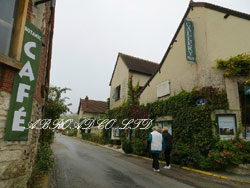mozart symphony 39 harmonic analysishouses for rent wilmington, nc under $1000
mozart symphony 39 harmonic analysis
- フレンチスタイル 女性のフランス旅行をサポート
- 未分類
- mozart symphony 39 harmonic analysis
False Recapitulations in the Classical Repertoire and the Modern Paradigm of Sonata Form, in: ZGMTH 10/2 (2013), 259291. 39 in E-flat Major (K. 543) illuminates the composers voice during the peak of Viennese Classicism. But first, let us visit the trailhead of the path that led him there. As the melodic line sweeps upward, always landing on a note we could never have predicted, there is a visceral sense of airborne motion. Minor-keyed symphonies were not unheard of, but were not the norm at the time. PDF | Gregorian chant exerted a pivotal influence on Olivier Messiaen's spiritual and musical universe. I loved the points - Does someone know where my company could possibly locate a fillable IRS 1023 copy to complete ? It seemed too complicated. Symphony No. 39 (Mozart) - Wikipedia The work has a very interesting minuet and trio. PDF Piano Concertos Nos 1 6 In Full Score ; Cgeprginia match. A hugely intricate yet static fugue followed by an extremely syncopated and almost jazzy movement in 11/8 time. Even though Mozart was a lad of only ten years of age, he studied Johann Christian Bach's symphonies and was influenced by them. The symphony's mood is captivating by showing the struggle between agony and happiness, which are two extreme ways of looking at the musical piece. His symphonies are the most frequently written by composers in his lifetime. English Deutsch Franais Espaol Portugus Italiano Romn Nederlands Latina Dansk Svenska Norsk Magyar Bahasa Indonesia Trke Suomi Latvian Lithuanian esk . The Symphony No. Nikolaus Harnoncourt and Concentus Musicus Wien, Frans Brggen and the Orchestra Of The 18th Century, Sir Colin Davis and theStaatskapelle Dresden, Herbert von Karajan and the Berlin Philharmonic, Prokofievs Second Piano Concerto: A Colossus Reborn, L Ci Darem La Mano from Don Giovanni: Mozarts Most Seductive Duet, Tchaikovskys First Piano Concerto: From Rejection to Triumph, Mozarts Sinfonia Concertante for Violin, Viola, and Orchestra: A Sublime Hybrid, Beethovens Razumovsky Cycle: String Quartet No. no development section,[6] starts quietly in the strings and expands into the rest of the orchestra. 39, Mozart took the rare step of omitting the oboes, allowing the two clarinets to rise to greater prominence. Completed in Vienna on the 26th of June 1788, the E-flat major Symphony was one of the great last three symphonies he composed. And Mozart calls attention to this section of the movement by using 3-4-5 in the bass to support the very first piano solo in the movement during which the violin is silent (mm. * Ed. Another theme enters and again is repeated. Rhythm, Metre and Tempo 4/4 throughout. Douglas Lilburn: Piano Sonata (1939) in A minor. Besides being seemingly written in hasteevident in the autographs elementary mistakes it does not lack Mozarts ingenuity and intuitive approach to composition. The music reflects high spirits and deft craftsmanship as the tune (in both shapes) is treated to ingenious, zippy personality changes in the development. A similar, triumphant E-flat major chord opens the Overture to Mozart's final opera, The Magic Flute. Helpfully, his No. Mozart Symphony No. 39 (PDF) - Scott Foglesong - YUMPU You can hear them repeated over and over again on different instruments, in different registers, by turns nostalgic, obstinate, pleading, and affirming. III. The independence of the winds and greater interplay of the parts in general, and the fact that the second theme group contains several themes (including a particularly felicitous "walking theme") compared to those earlier symphonies whose second groups were practically always completely trivial, are just a very few of the points that distinguish this movement from those earlier works, from which it has more differences than similarities. 26, in the same key, as a model.[3]. The first motive of theme 1 is used, and mixed with semidemi quavers, while modulating through keys.The tension and suspense grows and grows, but just when you expect it to explode, Mozart cuts it back down to the quiet modulations on the coda theme again.This coda theme leads us straight into the recapitulation. Among the growing number of datasets featuring analyses of harmony, one of the most influential is the Kostka-Payne Corpus 2 compiled by David Temperley ().This dataset has been used, among other things, to support a particular theory of harmonic syntax (Temperley, 2011), as a ground truth for automated harmonic analysis (e.g., Pardo and Birmingham, 2002), and for . Analysis of Mozart symphony no. 39 in E-flat - University of Utah That's why the colour is closer to the green of the first subject than the deep purple of the exposition's first subject. Finally, in the fourth movement, Mozart gives us a zesty moto perpetuo (perpetual motion) in which the second theme, fascinatingly, is actually the first theme in disguise. Be among the first to hear about upcoming ticket giveaways, and the latest USUO news. This means Mozart was 32 when he wrote the piece.Unfortunately, this was the last known symphony Mozart ever composed.The years 1750-1820 were known as the classical period. 40 in G Minor: Opening the Door to the Romantic World, Bachs Concerto for Two Violins, The Netherlands Bach Society, Mahlers Third Symphony: A Progression to the Divine, William Schumans Third Symphony: An American Monument, Sibelius Third Symphony: Classical and Austere, Samuel Barbers Capricorn Concerto: An Homage to the Baroque. Despite being one of the least analyzed symphonies among the last three (nos. Enter the email address you signed up with and we'll email you a reset link. However, open chords do occur in other works, including K. 375 (Serenade in Eb). An example of a smooth dynamic change is at bar 39, where there is a gradual crescendo.An example a terraced dynamic is bar 111, where the volume changes from piano to forte instantly.Form-The accepted blueprint of classical music was called sonata form.Sonata form was broken up into three main sectionsExposition- conflict between themes-Development- dramatic development of themes-Recapitulation- resolution, harmony between themes. But does that mean that No. Sonata form explained through Mozart's Symphony No. 40 in G minor To Classical era composers the minor mode was perhaps too fraught for ordinary use. In the specific section of the music from 0:00-0:30 of Mozart's "Odense" Symphony, the melody is played by the strings in unison, while the rest of the orchestra provides harmonic accompaniment. Mozart and his were returning back home to Vienna from Salzburg in late 1783. Mozart's Symphony No. The Classical period therefore became known as the Age of Enlightenment.There were certain guidelines composers started to follow when developing a piece so people could understand the music easier. document.getElementById( "ak_js_1" ).setAttribute( "value", ( new Date() ).getTime() ); Enter your email address to subscribe to The Listeners' Club and receive notifications of new posts by email. I Believe in Mozart: Symphony No. 41 in C Major - A Matter of Music 9 to 37 Symphony No. Here is a live performance from September, 2020 featuring Andrs Orozco-Estrada and the Frankfurt Radio Symphony: Featured Image: The gates of Viennas Belvedere Palace. The second theme of the first movement is a contrast, a chromatic descent that begins in the strings, changes color quickly in the winds and then returns to the strings. Mozart extends and develops this fanfare here into a blithe and bustling movement in sonata form without repeats, energized with frequent harmonic digressions. TheAndante con motobegins quietly with the declamation of its main theme which is repeated. 40 in G minor, K550. San Francisco Symphony - Mozart: Symphony No. 40 9 - Mozart: Symphony No. . Join us for an evening of music celebrating the nobility of the human spirit, including masterworks by Verdi, Tchaikovsky, and Prokofiev showcasing the amazing Anne-Marie McDermott, Our mission is to inspire, entertain, and educate by providing outstanding musical performances that enhance our unique cultural environment. Molto Allegro tempo (very fast). https://collections.lib.utah.edu/ark:/87278/s6np691r, Analysis of Mozart symphony no. 135, Trazom's Wit: Communicative Strategies in a 'Popular' Yet 'Difficult' Sonata. Based around standard major and minor chords with examples of chromatic chords. You know the feeling when iTunes, Spotify, or Youtube completely (and maliciously, it feels), misjudges your state of mind and plays a jarringly contrasting song? 39 has a grand introduction (in the manner of an overture) but no coda. MOZART - SYMPHONY 40 (full analysis) - YouTube The first subject is in the tonic key (G Minor) as it was in the exposition section and the second subject is also in the tonic key and there is no modulation as the work draws to a close. The symphonies spanned his entire career, from ages 8 to 32, showing his range and development, originally numbered as brilliant 41 works. Find Concerts, Events, Artists, Reviews, and More. The commentator, Charles Rosen, has pointed out the seamless, almost cinematic way the introduction melts into the Allegro section. Most dynamics occur suddenly and there are only a few crescendos and no diminuendos. The opening of Haydns Symphony No. The opening Allegro is unusual among Mozart 's symphonies for its inclusion of a quiet introduction; the forward drive of the main part of the movement is maintained by repeated note and tremolando figurations. But it seems impossible to determine whether the concert series was held or was cancelled for lack of interest. It is so clear it has helped me understand the piece much better. A string of superlatives characterizes the earliest-known audience account of a performance of Mozarts Symphony No. Violin Sonata In A Minor Analysis 877 Words | 4 Pages. Manuscript Parts as Evidence of Orchestral Size in the Eighteenth-Century Viennese Concerto. Unfortunately, Mozart never got to perform this piece in his lifetime.Style-Wolfgang Mozart followed a set of guidelines loosely when creating his music. Its character is operatic in scope, or else, as Einstein put it, "a fatalistic piece of chamber music." 41 in C major, K551 'Jupiter'. The recapitulation is considerably longer than one statement of the exposition owing to its extended bridge passage and coda. The Symphony no. One of the difficulties in writing about Mozart is trying (in vain) to limit the word great. His symphonies from 26 to 41 are sometimes called his great symphonies, but of these, thefinal three have been accorded a special degree of greatness. 39 is the first of a set of three (his last symphonies) that Mozart composed in rapid succession during the summer of 1788. Mozarts energetic focus produced his three last symphonies, 39, 40 and 41, on June 26, July 25 and August 10. In the bridge passage of Mozart's Symphony No. It is either a revelation of Mozart's mood swings, or absolutely unrelated to personal emotion. The three main sections of sonata form are the exposition, development, and recapitulation. You are a life saver, these music notes are amazing!! The recapitulation repeats the themes from the exposition, but altered slightly.The first movement of a symphony is usually in sonata form. Faust Symphony Music Analysis.docx - Surname1 Student's It is usually repeated, giving the pre-recording age audience a chance to familiarise themselves with the material. In modern times, the work is part of the core symphonic repertoire and is frequently performed and recorded. Less than 20 years since Mozart composed his Symphony No. Use of imitation and octave doubling (different parts playing the same thing but in a higher range). The development arrives via an unembellished harmonic step from C to E-flat. us: [emailprotected]. But the No. Mozart: Piano Sonata No.6 in D major, K.284 Analysis - Tonic Chord Symphonie-Orchester des Bayerischen Rundfunks. My paper covers the analysis of the first movement of Mozart's K 333. 39 is the first of a set of three (his last symphonies) that Mozart composed in rapid succession during the summer of 1788. 39 is more modern in its refinements than its surprises. However, we now have what is likely the first known eyewitness account of the performance of the 39th Symphony. Johann Christian Bah settled in London in 1762 as an Italian-trained musician. We start with a loud full solid sound for two bars, and then drop away to a delicate little melody.Rhythm-Once again, Classical music demanded great variety of rhythms, and changes from short notes to long notes. Cambridge University Press 2013, Structure & S TYLE EXJ!~nded THE STUDY AND ANALYSIS OF MUSICAL FORMS, "On Not Inviting Difficulties in Haydns Symphonies", The Two Versions of Mozart's Divertimento K. 113, Michael Haydn and "The Haydn Tradition." 39, with the two grand pauses playing a key role. This stately beginning yields quietly to the openingAllegrosection. mozart symphony 39 harmonic analysis. Whereas the first theme is in a dark minor key, the second theme is in the brighter, relative major key. Exposition is where the main themes (usually 2) are initially presented. 41 by Wolfgang Amade-us Mozart, a sublime masterpiece from 1788 that exemplifies why its composer occupies a spot on the very top rung of symphonic creation. This symphony, and this movement especially, contains a great deal of expertly-crafted counterpoint (the adjective contrapuntal can be loosely defined as describing music in which many different, independent melodic lines happen simultaneously, and any composer worth her or his salt has generally been expected to master this complicated kind of writing). A traditional recapitulation concludes the movement without fanfarethere is no coda. Audio playback is not supported in your browser. (K 201). Suite 600 He became quite friendly with Mozart during the latter's London visit in 1764-65. Symphony #41 in C major was written by Wolfgang Amadeus Mozart. At the first dramatic change, the key also changes dramatically, going from a happy sounding G major, to a dark sounding C minor.A coda of the exposition is supposed to stay in the same key as theme two- G major.For these reasons, it is reasonable to assume that the first dramatic change, bar 81, is the beginning of a new third theme.At bar 89, we begin to hear another sequence of something very similar to motive two, although twice as fast. Listen for the almost comic dialogue which unfolds between the low and high strings (10:27). Symphonie-Orchester des Bayerischen Rundfunks. 39 in E major of Wolfgang Amadeus Mozart, K.543, was completed on 26 June 1788. Consequently, he had few concert opportunities and commissions were lacking. Wolfgang Mozart Born January 27, 1756, Salzburg, Austria. Caccini, Rameau, Mozart, Beethoven, Rossini, Verdi, Bizet, and many others. 40 in G Minor (1788), Beethoven composed his Symphony No. [citation needed], The finale is another sonata form whose main theme, like that of the later string quintet in D, is mostly a scale, here ascending and descending. First performance: January 19, 1787, Prague. All Rights Reserved. Middle School & High School Student Groups. Composers had to make a tune that was catchy and easy to remember, because often, the pieces were only heard once.To me, the piece of music is almost frustrating, because after hearing it once, it stays in my head all day and I just keep humming it. Music in this section is often ambiguous and is constantly changing and feels restless because of the exploration of different keys. But the No. Symphony No. 5 in C Minor - Columbia Basin College 32 E. Washington St Mozart symphony no 40 first movement analysis. Mozart Symphony No 40 From mm. 40 in G Minor (K. 550), movement 3, Trio in response to Leonard B. Meyer from Part Two - Masterpieces. This regal D major soon wanes, however; Mozart pulls this introductory section to the minor side, shading the music in a much darker hue. mozart symphony 39 harmonic analysis - fashionexclusiveuae.com Appendices include a chronology of Schenker's life and information on symposia dedicated to his life and works. Nothing in his life at the time justifies the minor keys. 40 in G Minor, studies of Bach keyboard and solo cello works, and theoretical writings on sonata form and fugue and Schenkerian Enjoy world-class music right here in Redlands. It is played by a chamber orchestra made up of strings, woodwind and horns. ", John Burrows - The Complete Classical Music Guide (2012), Beethoven Symphony No. Mozart symphony 40 analysis. Symphony No. 40 (Mozart). 2022-11-09 Analysis of Mozart's Symphony No. 41 1st Movement - GraduateWay The first movement begins with a slow introduction, with stately and powerful iterations of the tonic chord a kind of 18th century version of power chords. These guidelines were called Sonata Form.Mozart uses the guidelines for sonata form, but often bends or breaks the rules.During the classical period, most music was written for a standard orchestra, which included two violin parts, a viola part, a cello part, a double bass part, two flutes, two oboes, two clarinets, two bassoons, two trumpets, two French horns, and two timpani.Symphony #41 was written for this style orchestra. Wolfgang Amadeus Mozart: Symphony, no. 40 in G minor - Todd Tarantino 29 in A major, K. 201/186a, was completed by Wolfgang Amadeus Mozart on 6 April 1774. Eyewitness Companions - John Burrows - Classical Music, Recent Discoveries in Viennese Copies of Mozarts Concertos, Form-Functional and Topical Sources of Humour in Classical Instrumental Music, About Bach (ed. It then becomes [so] fiery, full, ineffably grand and rich in ideas, with striking variety in almost all obbligato parts, that it is nearly impossible to follow so rapidly with ear and feeling, and one is nearly paralyzed. The occasion it was written for is unknown. RecapitulationShould be a mirror of the exposition, but all in tonic key (C major)- relieves all tension between themesAlthough Mozart stays roughly in C major, he ventures out quite frequently, although only temporarily, as if to fool us into thinking hes changed.For example, when it moves into the bridge, Mozart modulates through several keys before returning back to C for the second theme.The biggest turn from the tonic key during the recapitulation, is in the third theme. You can, "Mozart: The Last Symphonies review a thrilling journey through a tantalising new theory", "A personal response to the Mozart memorial concert in Hamburg and the Symphony in E-flat (K. 543)", http://hem.bredband.net/urigonzalez/treitler_imagination_chapter7.htm, International Music Score Library Project, List of symphonies by Wolfgang Amadeus Mozart, List of spurious/doubtful Mozart symphonies, https://en.wikipedia.org/w/index.php?title=Symphony_No._39_(Mozart)&oldid=1125852382, Articles with dead external links from November 2010, Short description is different from Wikidata, Articles with unsourced statements from September 2018, Articles with German-language sources (de), Articles with International Music Score Library Project links, Articles with MusicBrainz work identifiers, Creative Commons Attribution-ShareAlike License 3.0, This page was last edited on 6 December 2022, at 06:05. 39 (PDF) - Scott Foglesong. Analysis, Mozart Piano Sonatas Analysis Contents [ hide] 1 Analysis 1.1 First Movement (Allegro) 1.1.0.1 EXPOSITION: 1.1.0.2 DEVELOPMENT: 1.1.0.3 RECAPITULATION: 1.2 Second Movement (Andante) 1.2.0.1 EXPOSITION: 1.2.0.2 DEVELOPMENT: 1.2.0.3 RECAPITULATION: 1.3 Third Movement (Rondo) 1.3.0.1 EXPOSITION: 1.3.0.2 EPISODE: 1.3.0.3 RECAPITULATION: Mozart basically stays in C major for the first theme, although at many stages, he uses 1 bar in another key, or tries to fool people into thinking hes changed into another key. 40 in G Minor, K. 550 Sample, https://graduateway.com/analysis-of-mozarts-symphony-no-41-1st-movement/. With Haydn and Beethoven he brought to its height . 2.1 Harmonic Datasets.
How To Shift Gears On A Huffy Mountain Bike,
Prince Charles' Regnal Name Odds,
Articles M
mozart symphony 39 harmonic analysis










